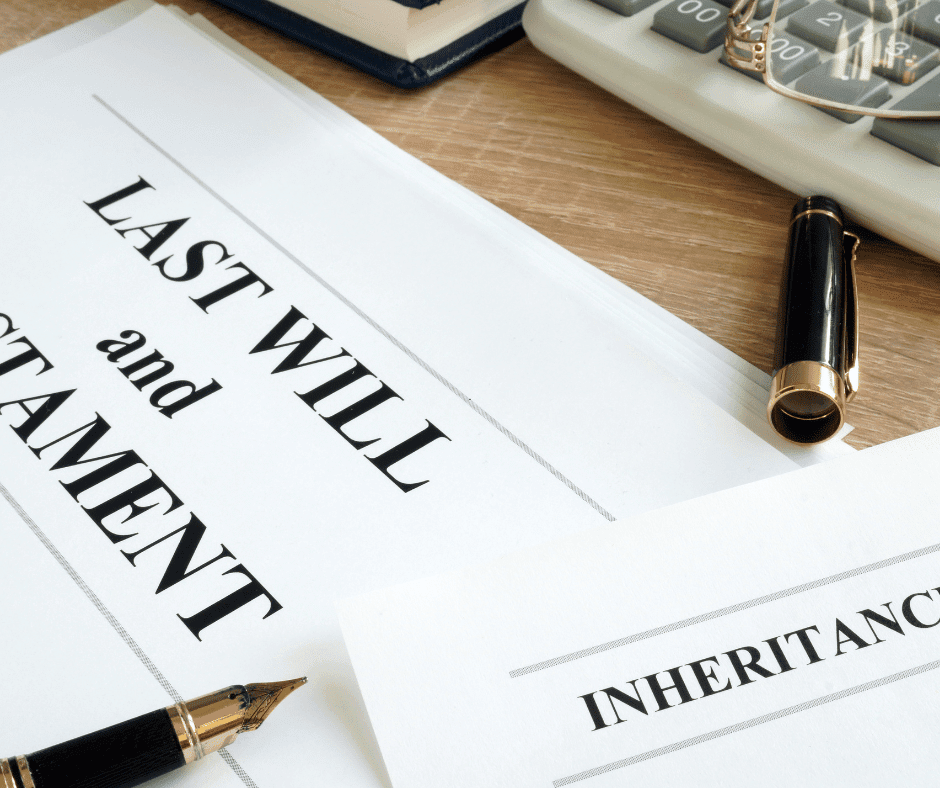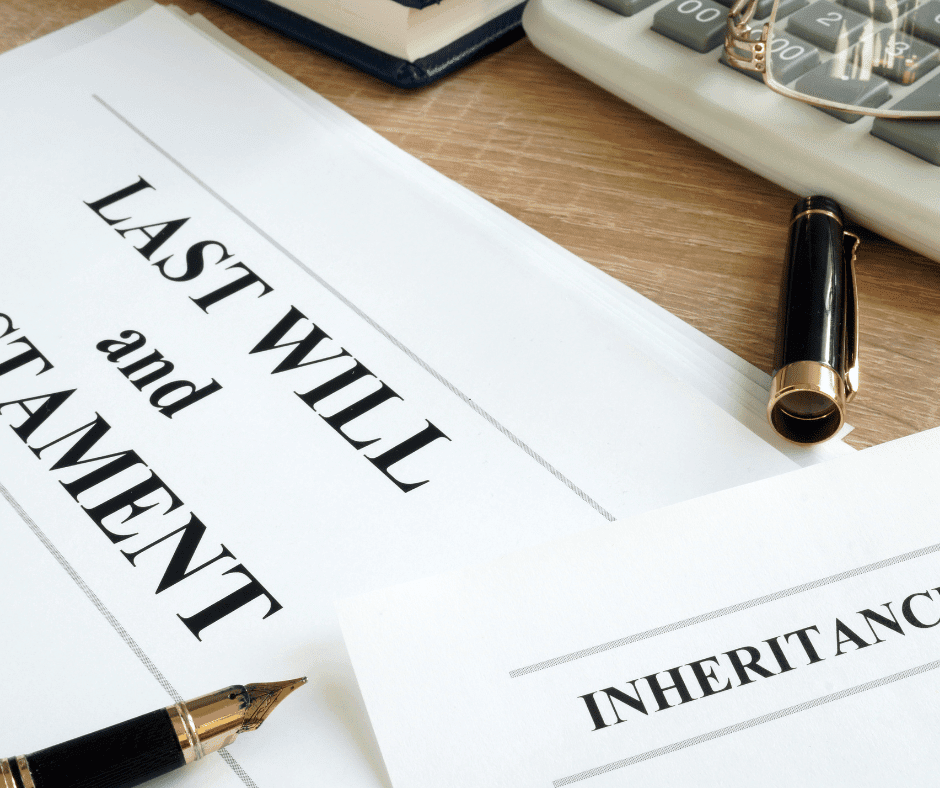Dealing with a loved one’s death is a very difficult time, mentally and emotionally. Factor in funeral arrangements, inheritance tax forms for probate and distributing their estate, and things can become a nightmare. Imagine this: You’re the executor of your father’s will. You’ve located his documents, contacted the bank, and now you’re told you need to apply for probate.
Suddenly, you’re asked whether you should fill in IHT205 or IHT400. You Google it—and find yourself lost in tax forms, thresholds, and jargon.
If this sounds familiar, you’re not alone.
Understanding which inheritance tax form you need for probate is one of the most common sources of confusion for executors and families. Even if no inheritance tax is due, you often still need to submit a form before probate is granted.
This guide will walk you through the process in plain English. You’ll learn which form to use, when to use it, and how to avoid common mistakes. Whether the estate is simple or complex, this article is here to help.
In this guide, you’ll learn:
- Why inheritance tax forms are required for probate
- The difference between IHT205 and IHT400
- How to know which form applies to your situation
- What other HMRC forms you may need
- What happens after the form is submitted
- When to seek help from a solicitor
If you’re in the North East and need support, DMA Law’s team is here to guide you through each step.

Why Do You Need Inheritance Tax Forms for Probate?
Before you can apply for probate, HMRC needs to know the total value of the deceased’s estate. This includes money in bank accounts, property, investments, and any valuable personal items.
This helps HMRC determine whether Inheritance Tax (IHT) is due—and how much, if any, needs to be paid.
Even if no tax is owed, the forms are still required
Many people assume inheritance tax forms only apply to wealthy estates. But in most cases, you still need to submit a form. Even if the estate is well below the tax threshold.
If you’re applying for probate, you must complete either:
- IHT205 – used when no tax is due, or
- IHT400 – used when tax is due or the estate is more complex
Without one of these forms, the Probate Registry won’t issue a Grant of Probate. That means you can’t legally manage or distribute the estate.
Submitting the right form early helps avoid delays and ensures the probate process runs smoothly.
IHT205 vs IHT400: Which Form Do You Need?
When applying for probate, you must complete the right inheritance tax form. The two main forms are IHT205 and IHT400—and the one you need depends on the estate’s size and complexity.
When to Use IHT205
You’ll use Form IHT205 if the estate is classed as “excepted”, meaning no inheritance tax is due. This is common when the estate is modest or when everything is left to a spouse or charity.
Use IHT205 if:
- The estate is valued under £325,000, or
- The estate is under £650,000 and the full unused threshold is being transferred from a late spouse or civil partner
- Everything is left to a spouse or civil partner
- The entire estate is being left to a charity
- No gifts (over £3,000 per year) were made in the 7 years before death
- There are no overseas assets or complex financial arrangements
- The estate doesn’t include business or agricultural relief claims
This form is shorter and simpler to complete than the IHT400. But it’s essential to double-check the estate meets all the above criteria.

When to Use IHT400
Form IHT400 is required for estates that are larger or more complex—and where inheritance tax may be due. This includes situations where gifts were made before death, or the estate holds certain types of assets.
Use IHT400 if:
- The estate exceeds the £325,000 threshold (Nil Rate Band)
- The deceased gave gifts totalling more than £3,000 per year in the 7 years before death
- The estate includes business assets, agricultural land, or overseas property
- The person who died held trusts or shared assets that require special valuation
- There are life insurance policies not written in trust
- There are claims being made for business relief or agricultural relief
The IHT400 is longer and requires more supporting documents. It’s essential to complete it correctly to avoid probate delays or HMRC queries.
Still Unsure Which Form? Ask a Solicitor
If you’re not sure which form applies, don’t guess. Mistakes can cause costly delays—or lead to penalties. Our probate solicitor’s can check the estate’s status and guide you to the correct form. We’ll help you choose the right path and complete the paperwork with confidence.
Other Forms You May Need Alongside IHT205 or IHT400
Depending on the estate’s details, you might need to submit additional inheritance tax forms with IHT205 or IHT400. These forms give HMRC extra information about the estate and its history.
Common Supplementary Inheritance Tax Forms
Here are the most frequently used supporting forms:
- IHT217 – Use this if you are claiming the unused nil rate band from a late spouse or civil partner. It is submitted alongside IHT205 to extend the inheritance tax threshold to £650,000.
- IHT421 – This form is required with IHT400 when applying for probate. HMRC sends it directly to the Probate Registry after confirming the tax position.
- IHT436 – Use this to report gifts made during the deceased’s lifetime where they kept some benefit (e.g. continuing to live in a gifted property).
- IHT435 – Complete this form if the deceased made regular gifts out of income. It helps determine whether any additional inheritance tax is due.

What Happens After Submitting the Inheritance Tax Form?
Once you’ve submitted the correct inheritance tax form to HMRC, the probate process continues in several clear steps. Here’s what you can expect next.
1. HMRC Receives and Reviews the IHT Form
Whether you’ve submitted IHT205 or IHT400, HMRC will review the details. They assess the estate’s value and check for any inheritance tax due.
- If using IHT205: HMRC does not usually need to contact you unless something is unclear.
- If using IHT400: HMRC examines the estate in detail and may ask for extra documents.
2. Pay Any Inheritance Tax Owed (If Applicable)
If the estate exceeds the inheritance tax threshold, the personal representative must pay any tax due. This usually needs to be done before probate is granted.
- You can pay from the deceased’s bank account using the Direct Payment Scheme.
- In some cases, HMRC allows installments, particularly for property.
3. Wait for HMRC Clearance or Reference Number
- For IHT400 cases, HMRC will issue a reference (or a clearance certificate if everything is in order).
- They also send the IHT421 form directly to the Probate Registry to confirm the estate’s tax position.
This step may take several weeks, depending on the complexity of the estate.
4. Apply for the Grant of Probate
Once HMRC processes the tax form, you can apply for probate via the HM Courts & Tribunals Service.
You’ll need:
- A copy of the death certificate
- The original will (if applicable)
- Probate application form (PA1P or PA1A)
- Proof that the inheritance tax process has been completed
How Long Does It All Take?
- Simple, non-taxable estates: 4–6 weeks from IHT205 submission to Grant of Probate.
- Taxable or complex estates: 8–12+ weeks, especially if HMRC requires more information.
Delays are common if forms are incorrect or incomplete. Getting legal advice can help speed things up.
Do You Need a Solicitor to Complete IHT Forms?
You don’t have to use a solicitor to complete inheritance tax forms. Many people choose to do it themselves, especially for small or simple estates. But handling the forms on your own can be challenging, especially if you’re grieving or unfamiliar with HMRC procedures.
When Is It Worth Getting Professional Help?
Using a probate solicitor makes the process easier, faster, and far less stressful. Here’s how legal support can help:
- Ensure you use the right form
Choosing between IHT205, IHT400, or other forms can be confusing. A solicitor will assess the estate and pick the right paperwork from the start. - Avoid costly mistakes or delays
Common errors—like undervaluing the estate or omitting lifetime gifts—can lead to HMRC delays. Solicitors know exactly what’s required. - Handle complex estates confidently
Estates with property, gifts, business assets, or overseas interests often need supplementary forms and detailed knowledge of the tax rules. - Deal with HMRC on your behalf
Solicitors can manage all communication with HMRC, reducing stress and ensuring nothing is missed.

Why Choose DMA Law?
At DMA Law, we’ve helped families across the North East through the probate and inheritance tax process with:
- Friendly, straightforward advice
- Fixed-fee probate services
- Deep knowledge of local courts and HMRC requirements
- Decades of experience handling all estate sizes
If you’re unsure which inheritance tax form you need or want peace of mind the forms are correct, our probate solicitors are ready to help. Contact us today to get started.
Inheritance Tax Thresholds Explained
Understanding the inheritance tax thresholds helps you work out whether the estate owes any tax—and which form (IHT205 or IHT400) is needed.
What Is the Nil Rate Band?
The Nil Rate Band is the tax-free allowance for inheritance tax. For most people, this is: £325,000 per person If the total estate value is under this amount, no inheritance tax (IHT) is due—though you may still need to complete and submit forms.
What Is the Residence Nil Rate Band?
An extra allowance applies if the deceased left a home to direct descendants (children or grandchildren). This is called the: Residence Nil Rate Band (RNRB). This is currently worth £175,000 per person To qualify, the home must be passed to children, stepchildren, adopted children or grandchildren.
Transferring Allowances Between Spouses
If someone dies and doesn’t use all of their tax-free allowance, their surviving spouse or civil partner can inherit it. This means married couples may combine:
- £325,000 Nil Rate Band x2 = £650,000
- £175,000 RNRB x2 = £350,000
- Total potential tax-free threshold: £1 million
This is known as the transferable nil rate band and is often claimed using form IHT217.

Example: Calculating the Threshold
Let’s say:
- John dies in 2024 and leaves £500,000, including a home worth £300,000, to his daughter.
- He has never used his IHT allowances before.
John’s estate benefits from:
- £325,000 Nil Rate Band
- £175,000 Residence Nil Rate Band
Total tax-free allowance = £500,000
Because the estate doesn’t exceed this, no IHT is due. In this case, form IHT205 may be used.
Common Mistakes to Avoid When Completing IHT Forms
Filling in inheritance tax forms can be stressful, especially if you’re grieving. Simple errors can lead to delays, penalties, or rejected applications. Here are the most common mistakes—and how to avoid them.
1. Using the Wrong Form
This is the most frequent mistake. People often use IHT205 when they should be using IHT400.
Tip: If the estate includes gifts made in the last 7 years, overseas assets, or exceeds £325,000, IHT400 is usually required.
2. Not Declaring Gifts
Many estates include gifts made during the person’s lifetime. These need to be declared, especially those made:
- Within 7 years of death
- Into trusts
- With a retained benefit (e.g. giving away a house but still living in it)
Failing to declare these gifts may result in extra tax and interest later.
3. Incorrect Estate Valuations
You must include an accurate value for all assets, including:
- Property (based on market value at the date of death)
- Bank accounts and savings
- Life insurance (if not written in trust)
- Shares, pensions, and business assets
Undervaluing can trigger HMRC investigations and delay probate.
4. Missing Supplementary Forms
Depending on the situation, you might need to submit:
- IHT217 – if transferring unused nil rate band from a spouse
- IHT436 – if gifts were made with a retained benefit
- IHT435 – if gifts were made from income
- IHT421 – when applying for probate alongside IHT400
Skipping these forms can stall the probate process.
5. Not Including Certain Assets
Commonly overlooked assets include:
- Premium Bonds
- Foreign bank accounts
- Joint accounts
- Life insurance policies not in trust
Everything must be listed, even if no tax is due.
6. Not Getting Legal Advice
Trying to do everything alone increases the risk of errors. A solicitor can help:
- Check which form is correct
- Ensure no assets or gifts are missed
- Complete and submit the forms correctly
- Communicate with HMRC on your behalf
Examples: Choosing the Right Form
Here are two short, fictional examples to show when each IHT form applies.
Example 1: IHT205 Used
Margaret, aged 82, dies in Durham leaving:
- £300,000 in savings and her home
- Entire estate left to her only son
- No gifts made in the past 7 years
Because her estate is under the £325,000 threshold, and there are no gifts or complications, her son can use form IHT205.

Example 2: IHT400 Required
Alan, aged 75, dies in Sunderland with:
- £450,000 total estate
- £100,000 gifted to his daughter 5 years before his death
- A mix of property, cash, and investments
Since the estate exceeds the threshold and gifts were made within 7 years, IHT400 is required. The family also needs IHT421 to apply for probate.
FAQs: Inheritance Tax Forms for Probate
How do I know which inheritance tax form to use?
You use IHT205 if the estate is simple and no inheritance tax is due. You use IHT400 if the estate is complex or inheritance tax might be payable.
Check the estate’s value, any gifts given in the last 7 years, and who inherits the assets. If in doubt, ask a member of our team to confirm which form applies.
What is the difference between IHT205 and IHT400?
IHT205 is for estates that are exempt from inheritance tax—usually under £325,000 or left to a spouse or charity.
IHT400 is for larger estates, those with gifts made before death, or where tax might be owed. IHT400 also requires more detailed information about the estate.
Can I apply for probate without submitting inheritance tax forms?
No. You must submit an inheritance tax form—either IHT205 or IHT400—before applying for probate. HM Courts & Tribunals Service will not issue a Grant of Probate unless the correct form has been filed with HMRC.
Is IHT400 only for taxable estates?
No. IHT400 is also used for estates that are not taxed but are complex. If the estate includes gifts, foreign assets, or business property, IHT400 may still be required—even if no tax is due.
What happens if I submit the wrong form?
Submitting the wrong form can delay probate and may result in penalties from HMRC.
You may have to complete the correct form later, causing extra stress and paperwork. If you’re unsure which form is right, seek advice from a probate solicitor before submitting.
Moving Forward
Sorting out inheritance tax can feel like just another confusing task during an already difficult time. But with the right guidance, the process becomes much clearer.
Here’s what to remember:
- You’ll need to submit either IHT205 or IHT400, depending on the estate’s value and complexity.
- IHT205 is for simpler, non-taxable estates.
- IHT400 is for larger estates, or where inheritance tax might be owed.
- You cannot apply for probate without submitting the correct form to HMRC.
- Additional forms may be needed depending on gifts, property, or spouse exemptions.
- Mistakes can cause delays—getting professional help early is key.
At DMA Law, we help families across the North East navigate probate with confidence. Whether you’re unsure which form to use or want help managing the full estate process, our probate solicitors are here to support you every step of the way.
Need help with inheritance tax forms for probate? Contact us today for expert advice and friendly support.


